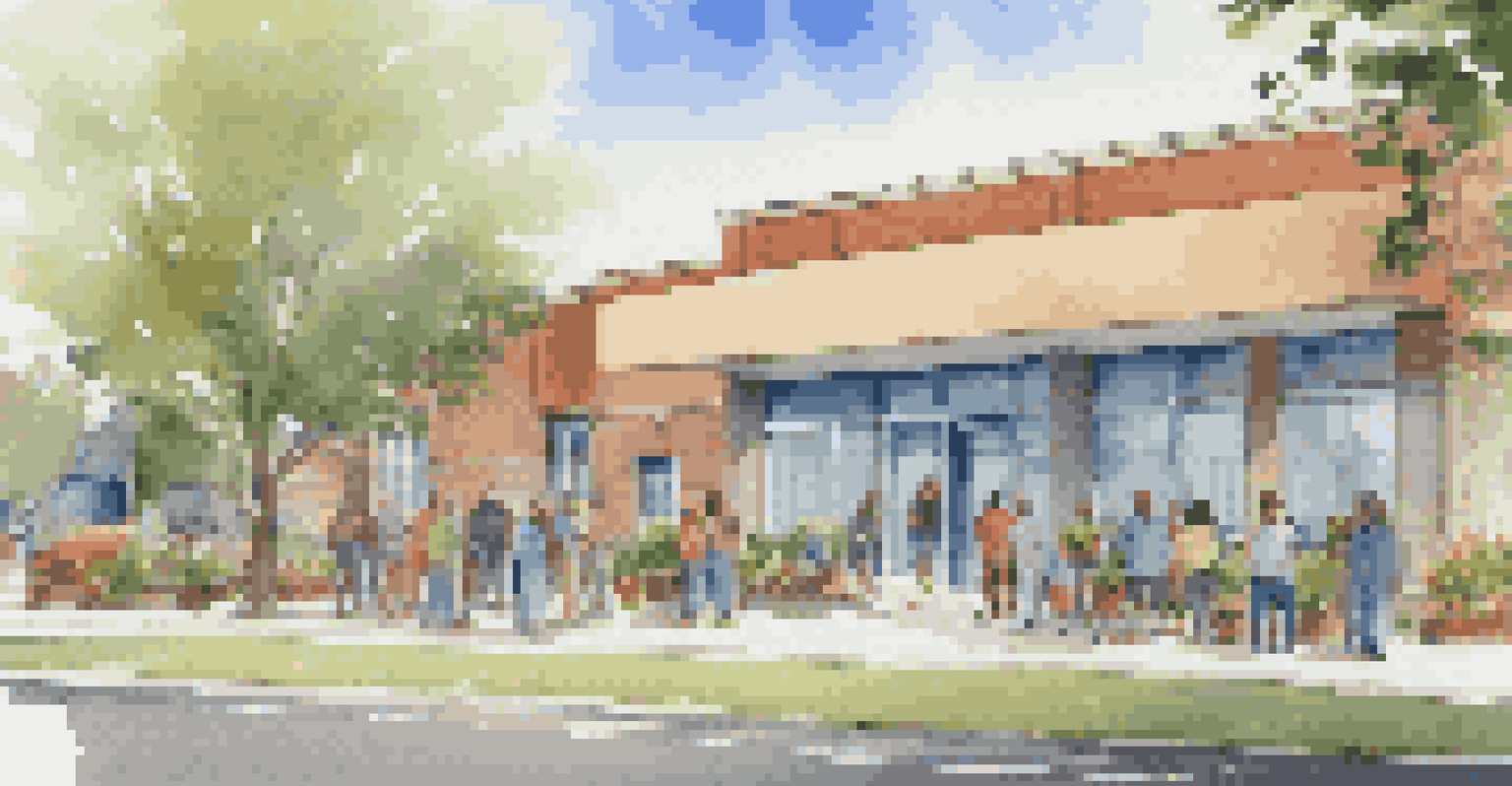Chronic Pain Awareness: Effective Advocacy Through Education

Understanding Chronic Pain: A Common but Complex Condition
Chronic pain affects millions of people worldwide, often disrupting daily life and mental well-being. Unlike acute pain, which fades as injuries heal, chronic pain lingers for months or even years, making it a complex challenge for many. Conditions like arthritis, fibromyalgia, and neuropathy are just a few examples where pain persists without clear underlying causes.
Pain is inevitable. Suffering is optional.
Living with chronic pain means navigating a landscape filled with uncertainty and frustration. People often feel misunderstood or dismissed by those around them, which can further exacerbate feelings of isolation. This highlights the urgent need for greater awareness and education surrounding chronic pain, fostering empathy and understanding in society.
Advocating for chronic pain awareness involves educating ourselves and others about its multifaceted nature. By sharing stories and experiences, we can break down stigma and ensure that those suffering from chronic pain feel seen and supported. This understanding is the first step toward effective advocacy.
The Importance of Education in Chronic Pain Advocacy
Education plays a pivotal role in advocating for those with chronic pain. By spreading knowledge about the complexities of chronic conditions, we empower individuals to seek appropriate treatment and support. This includes understanding the various types of chronic pain and the myriad ways it can manifest in individuals.

Moreover, educating healthcare providers is equally crucial. Many medical professionals may not fully understand the nuances of chronic pain, leading to misdiagnosis or inadequate treatment plans. By fostering a culture of continuous learning among healthcare providers, we can improve the quality of care and support for patients.
Chronic Pain Needs Greater Awareness
Chronic pain affects millions and requires understanding and empathy from society to support those who suffer.
Public education initiatives can also help dispel myths about chronic pain, reinforcing that it’s a legitimate medical issue rather than a personal failing. This shift in perception can lead to a more compassionate society that embraces those living with chronic pain, ensuring they receive the understanding and care they truly need.
Sharing Personal Stories to Raise Awareness
One of the most powerful tools in chronic pain advocacy is the sharing of personal stories. When individuals speak openly about their experiences, they humanize the condition and help others relate to the struggles faced daily. These narratives can be incredibly impactful, fostering empathy and understanding among listeners.
The greatest discovery of my generation is that a human being can alter his life by altering his attitude.
Social media platforms provide a unique space for individuals to share their journeys and connect with others facing similar challenges. By creating communities of support, we not only raise awareness but also provide a sense of belonging for those who often feel isolated due to their pain. These stories can also inspire others to advocate for themselves and seek the help they deserve.
In essence, personal stories serve as a bridge, connecting the experiences of those living with chronic pain to the wider community. They can spark conversations and lead to a deeper understanding of the challenges faced, ultimately driving change in attitudes and policies related to chronic pain.
Utilizing Online Resources and Support Networks
In today's digital age, the internet is a treasure trove of resources for those advocating for chronic pain awareness. Online forums, support groups, and educational websites provide invaluable information and a sense of community for individuals navigating their pain. These platforms allow users to share experiences, tips, and emotional support.
Many organizations dedicated to chronic pain awareness also offer webinars, articles, and toolkits to help advocates better understand the condition and its implications. This wealth of information can empower individuals to become more effective advocates for themselves and for others suffering from chronic pain. It’s important to tap into these resources to stay informed and connected.
Education Empowers Pain Advocacy
Educating individuals and healthcare providers about chronic pain is crucial for improving treatment and reducing stigma.
However, while the internet can be a powerful ally, it’s essential to discern credible sources from misinformation. Advocates should prioritize reputable organizations and peer-reviewed studies to ensure they are sharing accurate and helpful information. This vigilance strengthens the advocacy movement and builds trust within the community.
Engaging in Policy Advocacy for Lasting Change
Advocacy for chronic pain awareness extends beyond personal stories and education; it also involves engaging in policy advocacy. This means working to influence legislation that affects the lives of those living with chronic pain. By advocating for improved healthcare access, research funding, and patient rights, we can drive meaningful change at local, state, and national levels.
Joining forces with established organizations can amplify these efforts. Many advocacy groups focus on specific chronic pain conditions, and collaborating with them can enhance outreach and impact. These partnerships can help create a unified voice that lawmakers are more likely to listen to and act upon.
Moreover, sharing our experiences with policymakers can help them understand the real-life implications of their decisions. By providing data, testimonials, and insights, advocates can help shape policies that lead to better healthcare solutions and increased awareness of chronic pain issues.
Creating Educational Materials for Wider Reach
One effective way to advocate for chronic pain awareness is by creating and distributing educational materials. These can include brochures, infographics, or even videos that explain chronic pain, its effects, and available resources. By making this information accessible, we can reach a broader audience and foster understanding.
Collaboration with healthcare providers and educators can enhance the credibility and reach of these materials. Schools, community centers, and clinics can serve as distribution points, ensuring that vital information reaches those who may need it. The more we educate our communities, the more we can reduce stigma and encourage individuals to seek help.
Community Strengthens Advocacy Efforts
Building supportive communities fosters connection and amplifies efforts to raise awareness and advocate for chronic pain issues.
Furthermore, utilizing various formats allows us to cater to different learning styles. Some individuals may prefer reading, while others might retain information better through visual or auditory means. By diversifying our educational approaches, we can maximize our impact and ensure everyone has access to the knowledge they need.
The Power of Community in Chronic Pain Awareness
Community plays a crucial role in chronic pain advocacy. Connecting with others who understand the daily struggles of living with chronic pain can provide emotional support and practical advice. Whether through local support groups or online communities, the sense of belonging can be incredibly healing.
Moreover, communities can mobilize to advocate for change more effectively than individuals alone. By banding together, members can organize events, campaigns, and initiatives that raise awareness and funds for chronic pain research and resources. This collective effort can amplify voices that might otherwise go unheard.

Ultimately, a strong community leads to a more informed and compassionate society. As individuals share their experiences and support one another, they contribute to a culture that values awareness, understanding, and advocacy for those living with chronic pain.